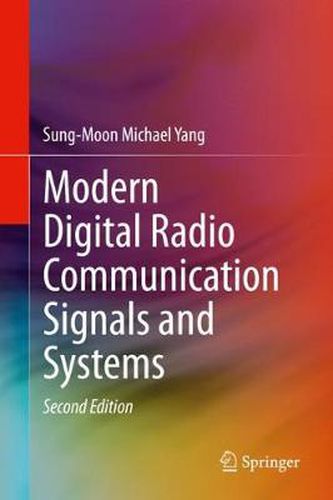Readings Newsletter
Become a Readings Member to make your shopping experience even easier.
Sign in or sign up for free!
You’re not far away from qualifying for FREE standard shipping within Australia
You’ve qualified for FREE standard shipping within Australia
The cart is loading…






This title is printed to order. This book may have been self-published. If so, we cannot guarantee the quality of the content. In the main most books will have gone through the editing process however some may not. We therefore suggest that you be aware of this before ordering this book. If in doubt check either the author or publisher’s details as we are unable to accept any returns unless they are faulty. Please contact us if you have any questions.
This book serves as an easily accessible reference for wireless digital communication systems. Topics are presented with simple but non-trivial examples and then elaborated with their variations and sophistications. The book includes numerous examples and exercises to illustrate key points. For this new edition, a set of problems at the end of each chapter is added, for a total of 298 problems. The book emphasizes both practical problem solving and a thorough understanding of fundamentals, aiming to realize the complementary relationship between practice and theory. Though the author emphasizes wireless radio channels, the fundamentals that are covered here are useful to different channels - digital subscriber line, coax, power lines, optical fibers, and even Gigabit serial connections.
The material in chapters 5 (OFDM), 6 (Channel coding), 7 (Synchronization), and 8 (Transceivers) contains new and updated information, not explicitly available in typical textbooks, and useful in practice.
For example, in chapter 5, all known orthogonal frequency division multiplex signals are derived from its digitized analog FDM counterparts. Thus, it is flexible to have different pulse shape for subcarriers, and it can be serial transmission as well as block transmission. Currently predominant cyclic prefix based OFDM is a block transmission using rectangular pulse in time domain. This flexibility may be useful in certain applications.
For additional information, consult the book support website:
$9.00 standard shipping within Australia
FREE standard shipping within Australia for orders over $100.00
Express & International shipping calculated at checkout
This title is printed to order. This book may have been self-published. If so, we cannot guarantee the quality of the content. In the main most books will have gone through the editing process however some may not. We therefore suggest that you be aware of this before ordering this book. If in doubt check either the author or publisher’s details as we are unable to accept any returns unless they are faulty. Please contact us if you have any questions.
This book serves as an easily accessible reference for wireless digital communication systems. Topics are presented with simple but non-trivial examples and then elaborated with their variations and sophistications. The book includes numerous examples and exercises to illustrate key points. For this new edition, a set of problems at the end of each chapter is added, for a total of 298 problems. The book emphasizes both practical problem solving and a thorough understanding of fundamentals, aiming to realize the complementary relationship between practice and theory. Though the author emphasizes wireless radio channels, the fundamentals that are covered here are useful to different channels - digital subscriber line, coax, power lines, optical fibers, and even Gigabit serial connections.
The material in chapters 5 (OFDM), 6 (Channel coding), 7 (Synchronization), and 8 (Transceivers) contains new and updated information, not explicitly available in typical textbooks, and useful in practice.
For example, in chapter 5, all known orthogonal frequency division multiplex signals are derived from its digitized analog FDM counterparts. Thus, it is flexible to have different pulse shape for subcarriers, and it can be serial transmission as well as block transmission. Currently predominant cyclic prefix based OFDM is a block transmission using rectangular pulse in time domain. This flexibility may be useful in certain applications.
For additional information, consult the book support website: